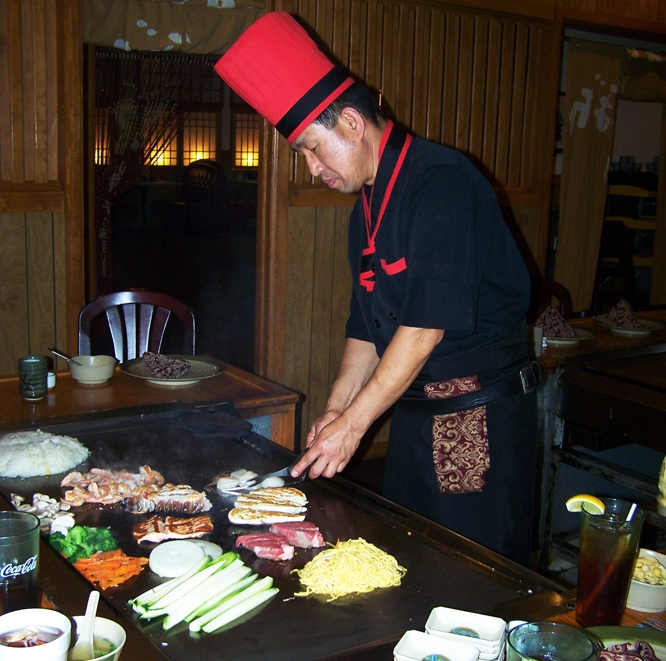 THE ART OF TEPANYAKI
THE ART OF TEPANYAKI
A AMERICAN FAVORITE 225 YEARS IN THE MAKING FROM JAPAN
Teppanyaki cooking has a 225-year history. What does teppanyaki mean? It means, quite literally, broiled on a steel grill, which is the definition of Japanese teppanyaki-style cooking in its simplest form. Traditionally, meals were cooked on a small hibachi grill at home, but the practice has evolved into a highly refined and beautiful form of expression, characterized by an intricate combination of presentation and knife skills.
The first commercial restaurant opened in Japan in 1945. Originally, customers were allowed to choose from whatever fresh ingredients were available that day and have them cooked to order by their chef. The first Japanese teppanyaki steakhouse in the United States opened in 1964 and the art has been fine tuned over the years.
A fast-heating grill top, called a teppan, acts like a flat wok, quickly searing whatever meat or vegetable hits its surface.The chef/performer demonstrates artistry with a knife and throws in a few other surprises as your meal is quickly and delicately sautéed before your eyes.
The chef will juggle utensils, flip a shrimp into his shirt pocket, catch an egg in his hat, toss an egg up in the air and split it with a knife, flip shrimp pieces onto the diners' plates, or arrange onion rings into fire-shooting volcanos. And of course there's always the choo choo.
The flaming onion volcano consists of a number of slices of onion stacked to look like Mount Fuji. Oil is poured into the center through the open top, then diluted ethyl alcohol, and then the mixture is set on fire. The alcohol burns off in a few seconds, leaving a steam of unburned alcohol streaming out of the top like a smoking volcano.
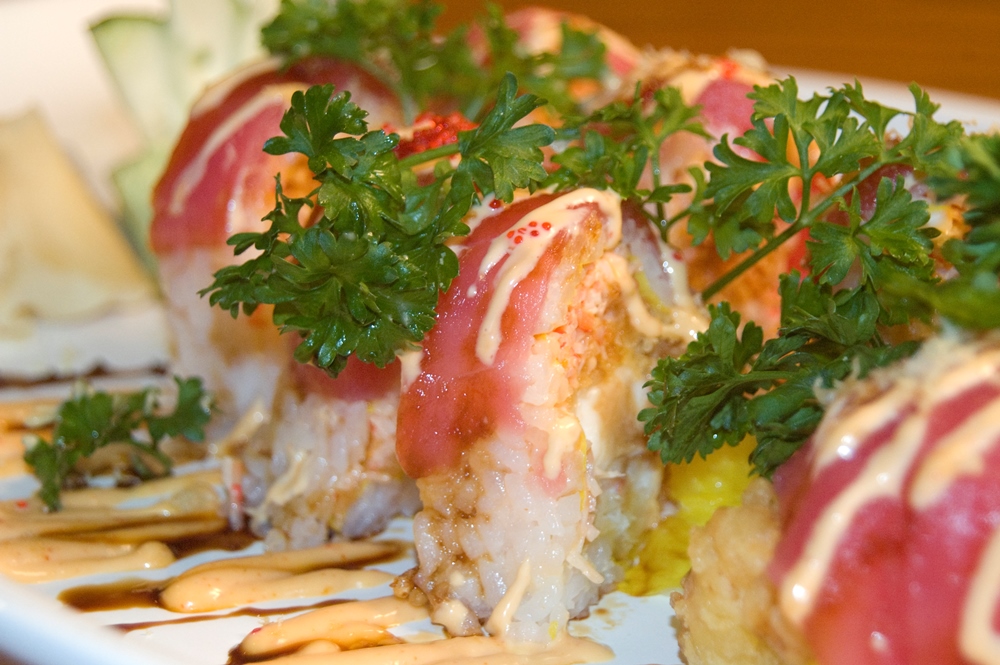 THE STORY OF SUSHI
THE STORY OF SUSHI
ONE OF THE MOST POPULAR INTERNATIONAL DISHES
Sushi in all its forms offers a unique and flavorful eating experience that’s unlike anything else. The cold, firm fish combined with rice, sauce, and other ingredients is truly one-of-a-kind and delicious.
Sushi traces its origins to the rice fields of Asia – China, to be specific - in the 2nd century BC as a Chinese dish called narezushi. This dish consisted of fermented rice and salted fish. The rice was fermented to preserve it, and the fish was salted heavily to prevent the growth of bacteria and microorganisms – keeping it fresh longer, even when stored without any kind of refrigeration. Sushi predates refrigerators by nearly 2,000 years. The rice was typically thrown out when eating the fish. It was used only to wrap and preserve the fish, so sushi, or actually zushi, in the Japanese language refers to the rice, not the fish or other toppings.
The dish spread from China to Japan in the 8th century. The first written reference to “sushi” appeared in the Yoro Code in 718. Yohei Hanaya developed the sushi we know today as nigiri around 1824, and, as the story goes, first sold it from a box he carried on his back. As he became more and more successful, he moved his operation to a stand, before eventually opening a restaurant (called Yohei Zushi and located in the Ryogoku area of present-day Tokyo) which remained in operation until 1932.
Sushi dishes may also include meat, vegetables, mushrooms, or eggs. Sushi toppings may be raw, cooked, or marinated. Many types of sushi are made with cooked ingredients, like barbecued eel (unagi) or Japanese omelets (tamagoyak). Sashimi, on the other hand, is always made with fresh, raw meat and fish, delicately sliced and served with a variety of colorful garnishes.
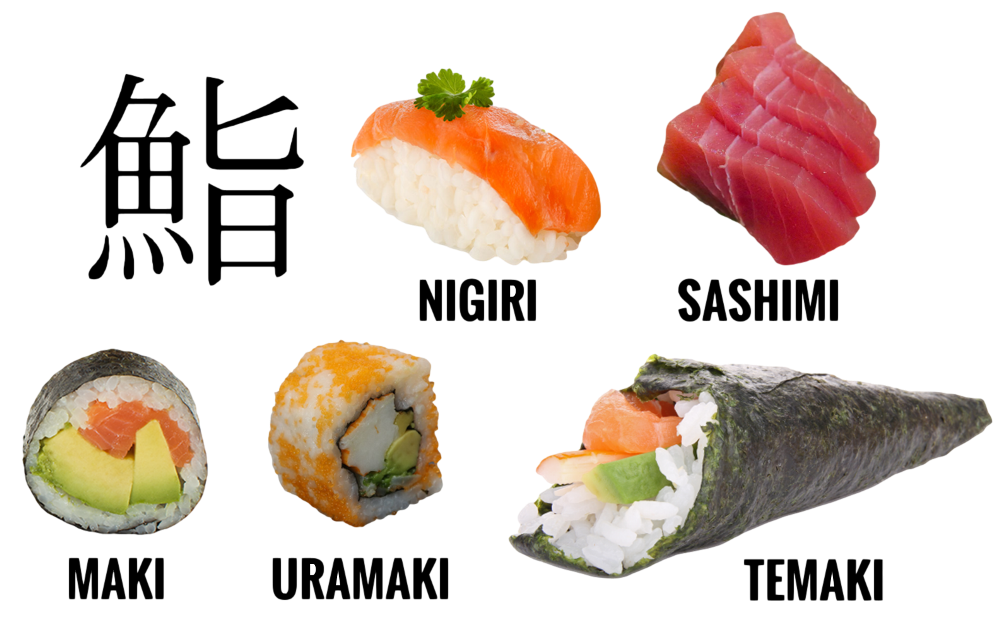 SUSHI AND SASHIMI
SUSHI AND SASHIMI
WHAT'S THE DIFFERENCE IN SUSHI, SASHIMI AND NIGIRI?
Sashimi is just the meat, served without other ingredients. Sushi also uses rice and other ingredients, such as vegetables, which are all rolled up in a sheet oF nori (seaweed) and sliced into pieces.
You'll either see it as maki (which means roll), where the seaweed is on the outside; uramaki, where the seaweed is on the inside and rice is on the outside; or temaki, a cone-shaped piece of sushi that's rolled by hand.
Nigiri is the dish that's halfway in between. Nigiri is sashimi that's served on a molded rectangle of rice. While most sashimi is raw fish, some sashimi is not raw and some sashimi is not fish. For example, unagi is cooked freshwater eel, and sashimi also encompasses other types of seafood.
FIVE MAIN TYPES OF SUSHI
- Nigiri - A topping, usually fish, served on top of sushi rice. Not all nigiri is raw, though this dish is best for people who want to appreciate the flavor of the fish, shellfish, or other toppings.
- Sashimi - Fish or shellfish served alone (no rice). This is best for people who really love to taste the fish or shellfish since it comes with nothing else.
- Maki - Rice and filling wrapped in seaweed. This is what most people think of when they think of sushi rolls
- Uramaki - Similar to the above, but rice is on the outside and seaweed wraps around the filling. These rolls often have lots of toppings and sauces — they may either be cooked or raw.
- Temaki - Sushi that has been hand-rolled into a cone shape. The cones are not as easy to share as the rolls.
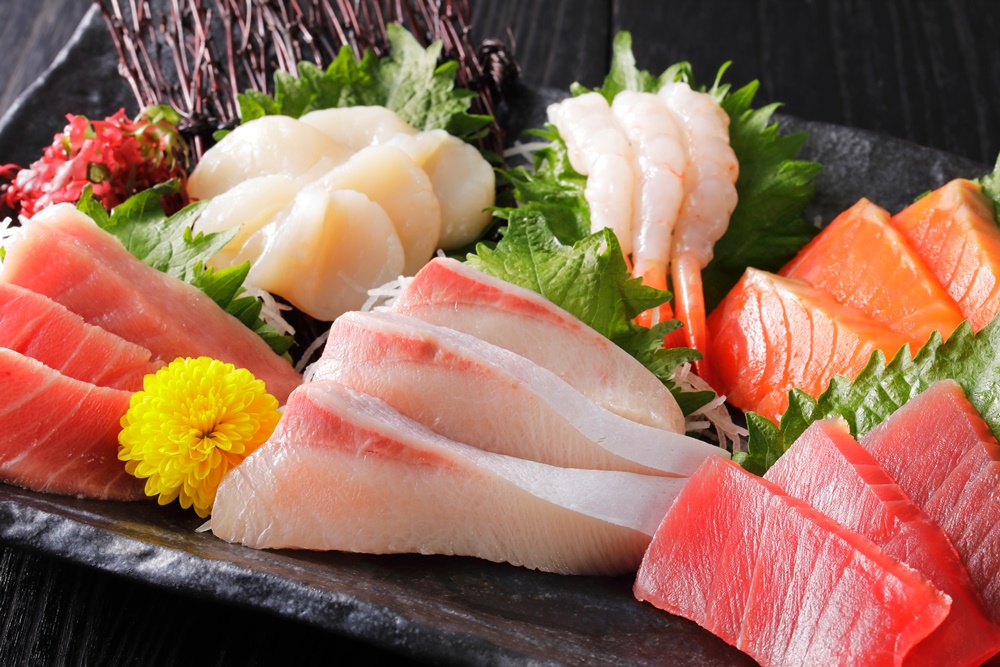
ALL ABOUT THE FISH
it is difficult to distinguish between different kinds of fish and fish dishes. It is not unusual for the same type of fish to have different names depending on the dish it is used in, the way it is cut, or the method of cooking. There are many different kinds of sashimi — these are some of the more common items you might see. Spellings might vary.
Aji - Spanish Mackerel (raw)
Amaebi - Sweet Shrimp (raw)
Anago - Saltwater Eel -- usually deep-fried or boiled
Aoyagi -Round Clam (raw)
Bincho - Albacore White Tuna (raw)
Katsuo - Skipjack Tuna (raw)
Ebi - Tiger Shrimp (cooked)
Escolar - Butterfish (raw)
Hamachi - Yellow Tail (raw)
Hamachi Toro - Yellowtail Belly (raw)
Hirame - Halibut (raw)
Hokigai - Surf Clam (cooked)
Hotate - Scallop (raw)
Ika - Squid (cooked or raw)
Ikura - Salmon Roe (fish eggs)
Kani - Crab Meat (cooked)
Kanpachi - Amberjack (raw)
Maguro - Tuna (raw)
Saba - Mackerel (raw)
Sake - Salmon (raw)
Sake Toro - Salmon Belly (raw)
Tai - Red Snapper (raw)
Tako - Octopus (cooked)
Tamago - Sweet Egg Omelet (cooked)
Toro - Blue Fin Belly (raw)
Tsubugai - Whelk Clam (raw)
Umi Masu - Ocean Trout (raw)
Unagi - Barbecued Freshwater Eel
Uni - Sea Urchin (raw)
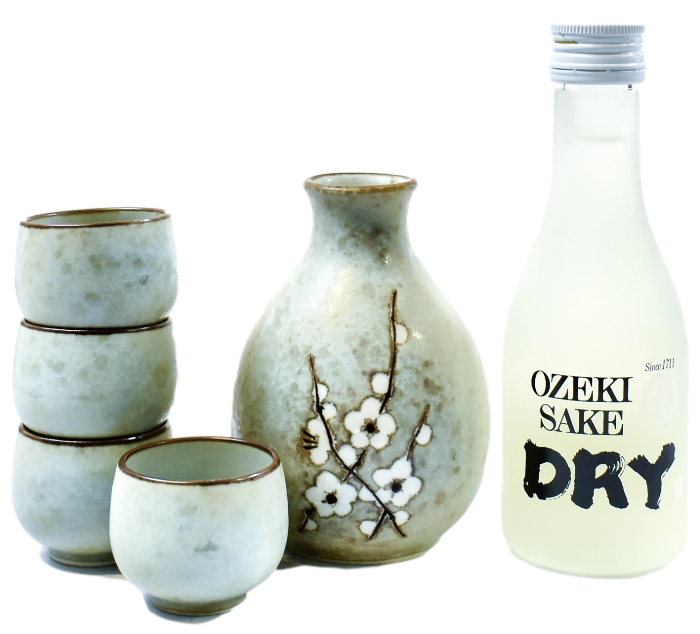 ALL ABOUT SAKE
ALL ABOUT SAKE
SAKE-WA-HONSHIN-WO-ARAWASU*
Sake is often referred to as rice wine, but it’s actually not a wine at all because it’s not made from grapes. In fact, Sake has more in common with beer, which is also brewed from fermented grains. Most sake contains about 16% alcohol. Also like both beer and wine, it can have very unique flavor profiles depending on the ingredients and the brewing process. Unlike beer and wine, most Sake is clear.
Sake is brewed from short grain rice and water under strict oversight of a sake brewmaster. Not a single element can be compromised when brewing premium quality sake. Over the centuries the Japanese have cultivated a special kind of rice perfect for brewing sake. This kind of rice is called saka mai in Japanese, and is very different from the kind of rice people eat. The grain of saka mai is bigger than the regular rice grain. Sake-making rice is improved to contain less protein and fat which might spoil the quality of the sake.
More than 80 percent of sake is made from water. Naturally, the quality of water determines the quality of sake. In fact, the Japanese regions where the quality and taste of water is highly praised are often famous for excellent sake products.
Historically the farmers in the deep mountains and fishermen brewed sake to make a living during the winter season in Japan. These men gradually formed artisanal sake-making groups all over the country. The master or leader of these sake brewers is called a toji. The tradition and knowledge of sake brewing has been passed on from generation to generation by toji for centuries.
Sadly, this ancient Japanese tradition is disappearing fast due to the modern brewing technology that has replaced the old manual method of sake making. However, no matter how advanced the technology has become, nothing can match the knowledge, skills and intuition of the seasoned toji.
*While it’s wine that reveals truth in Latin languages (in vino veritas), it’s sake that ‘reveals the true heart’ in Japan
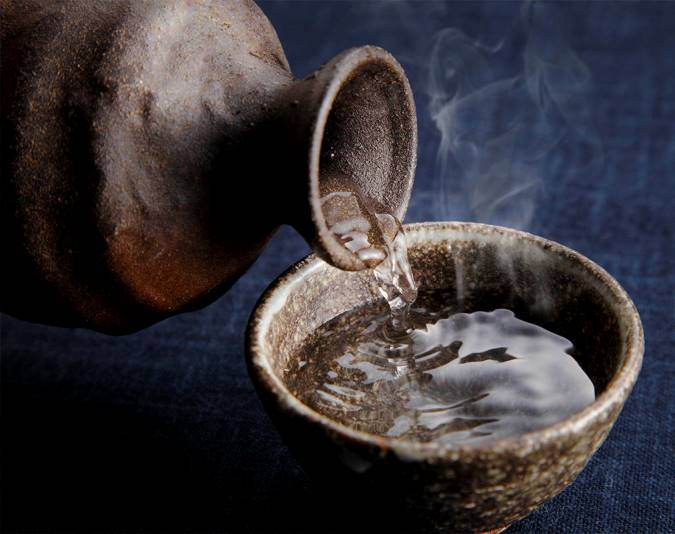 HISTORY OF SAKE
HISTORY OF SAKE
Sake, or rice wine, is about as old as Japanese’s reputation for growing rice, but the origins of sake can be traced to mainland China as far back as 4800 BC. The Japanese are credited with the evolution of the drink since about 400 BC.
Considering the first ochoko of sake brewed pre-dates historical records, most experts estimate the sake recipe is roughly 2,500 years old. The first mention of sake in history books appeared in the third century, where a Chinese history book noted Japan’s taste for sake and its use in mourning the dead.
Fast forward to the 12th century, where history gives more insights into how it was brewed. Shinto shrines and Buddhist temples were common sake-producing grounds creating the techniques that are still in use today.
Brewers used lactic acid fermentation, in which seed mash was used to grow yeast. The lactic acid prevented microbial growth and contamination. During the mashing process, brewers added steamed rice, koji (a mold enzyme), and water in various stages. By the 16th century, sake producing had taken on something of a mass-produced process.
This Japanese staple got a major makeover in the 20th century during World War II, when rice shortages abounded. Brewers had to add pure alcohol and glucose to the seed mash just to maintain supply and demand. Today, the majority produced is still made this way.

